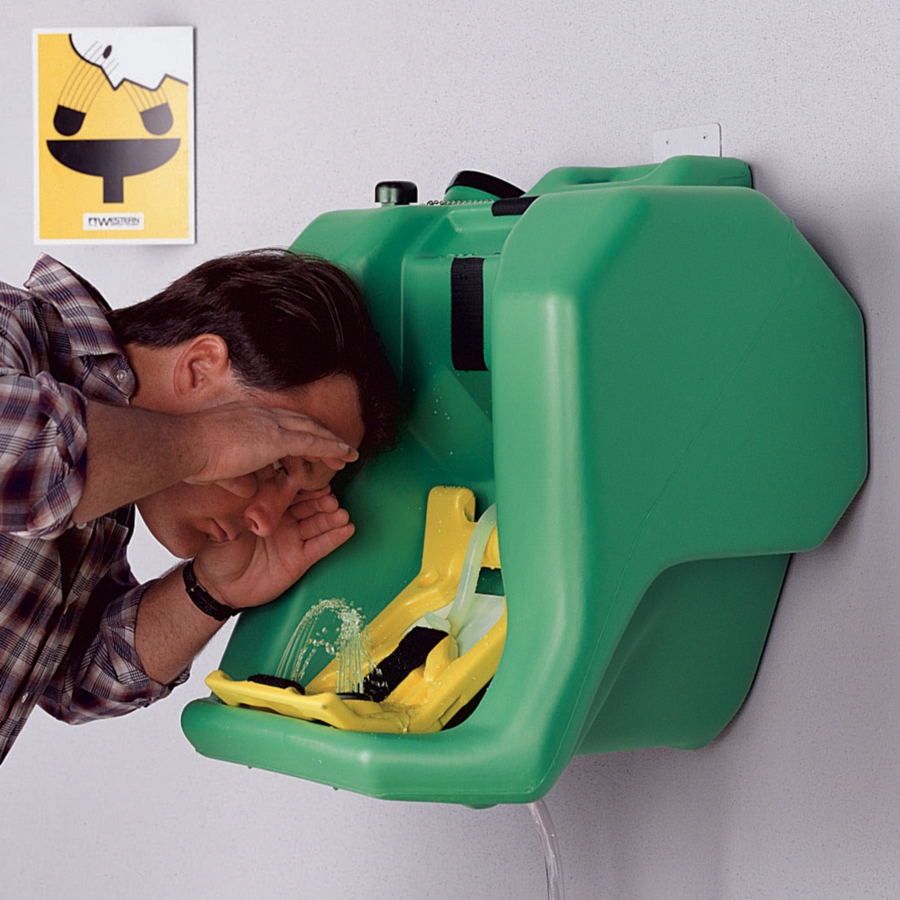How To Maintain & Clean Your Emergency Eyewash Stations
Emergency Eyewash Station Maintenance
In this guide, we’ll walk you through some best practices on how to keep your eyewash units in tip-top condition, so that you can rest assured that they’ll be ready for action should the unthinkable happen.
Why is maintenance so important?
Eyewash stations are of critical importance in any workplace that works with hazardous, corrosive substances. Using an eyewash in an emergency situation can help prevent scarring, permanent injury and blindness.
Improper maintenance can lead to a number of hazards, which we’ve detailed below.
Infections
Bacteria, amoeba and other disease-causing organisms thrive in stagnant water. If an eyewash station is not regularly flushed and activated for testing purposes, the water within the system will begin to harbor organisms such as legionella, pseudomonas and acanthamoeba, which, if propelled into the eyes, can cause nasty infections such as conjunctivitis.
If the user’s eyes have been damaged (which, after all, is probably the reason they’d be using an eyewash unit in the first place), the risk of infection is even greater.
Corrosion
Over time, iron-containing metals that come into contact with water are liable to oxidize, or rust. Not only can this lead to contamination of the water used in the eyewash station, but it can also cause damage to the unit itself.
Corrosion can cause holes in the pipes supplying the eyewash unit, resulting in leaks, which can cause the eyewash to discharge water at an insufficient pressure, diminishing its ability to properly flush out the eyes of the user.
Blockages
Occasionally, dust, dirt and foreign objects can build up within an eyewash station, especially if it is not operated for a long period of time. This debris can lead to contamination and cause blockages in the pipework.
Blockages can impede the flow of water to the unit, or conversely increase the pressure, sometimes even to levels that can harm the user’s eyes.
Testing
The ANSI regulations, as well as the various other bodies of guidance that pertain to emergency eyewash stations, state that units must be regularly tested, and for good reason.
Regular testing doesn’t just ensure that the unit is functioning correctly – it also helps prevent the water within the unit from sitting and becoming stagnant and helps flush any collected debris through the pipes.
Aside from the weekly functional testing mandated by the ANSI regulations, it is advisable to perform a weekly visual inspection of all eyewash units to ensure that they are free from detritus and in a good state of cleanliness.
The water stored in portable eyewash stations should be changed at least every 120 days. The water should also be treated with water preservative to help keep microbes at bay. Water preservative comes supplied with all of our portable eyewash units.
Cleaning
As with any item of safety equipment, it is crucial that eyewash stations are kept clean and sanitary. This will prevent the buildup of harmful, infection-causing microbes.
When cleaning an eyewash station, use a simple solution of household detergent and hot water. Apply the solution to the unit with a soft sponge or cloth before rinsing thoroughly, making sure to sluice away any remaining soap residue.
Did You Know?
UniFirst First Aid + Safety First Aid offers onsite services to help you meet and maintain compliance for your Eye Wash Station, First Aid cabinet, AED, and many other safety-related items?
Call Now to speak with a UniFirst First Aid + Safety Specialist
Click Here to learn more about Eye Wash Stations
Follow us:
Source: https://www.safety-eyewash.co.uk/content/eyewash-maintenance-guide


